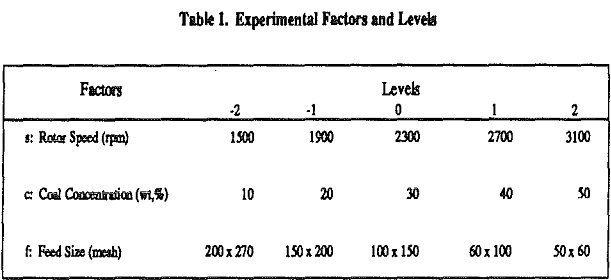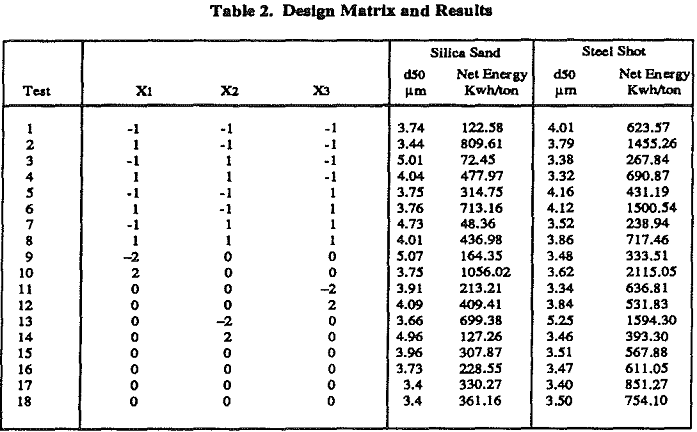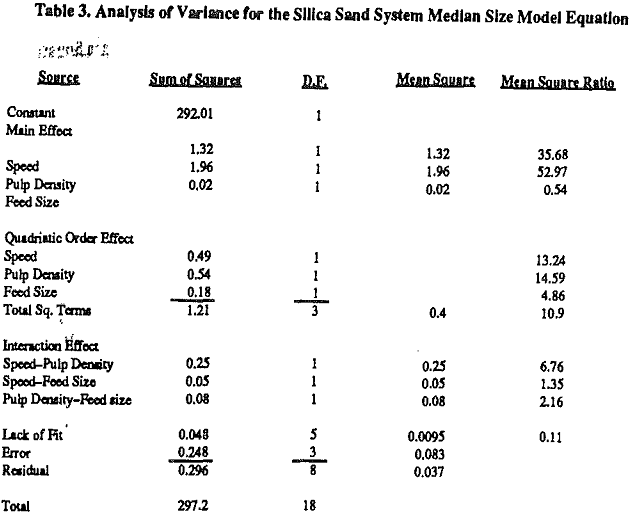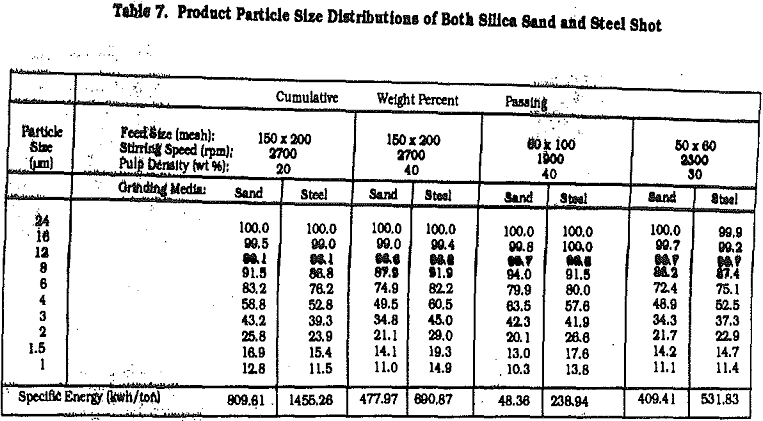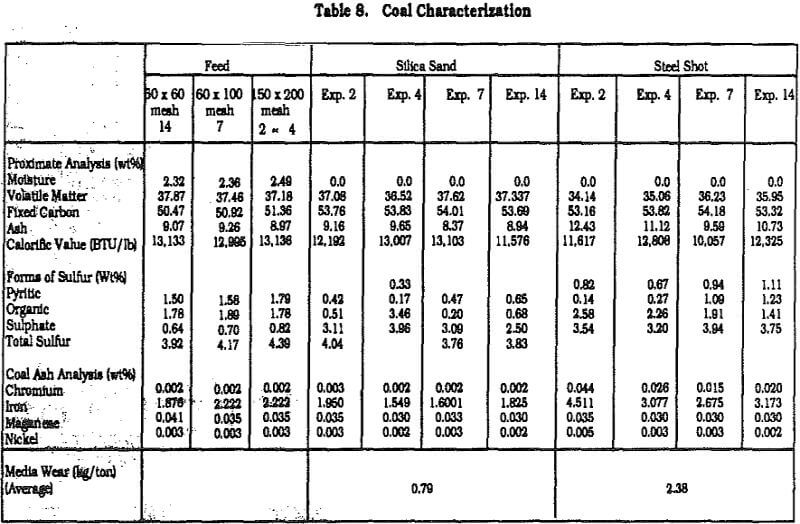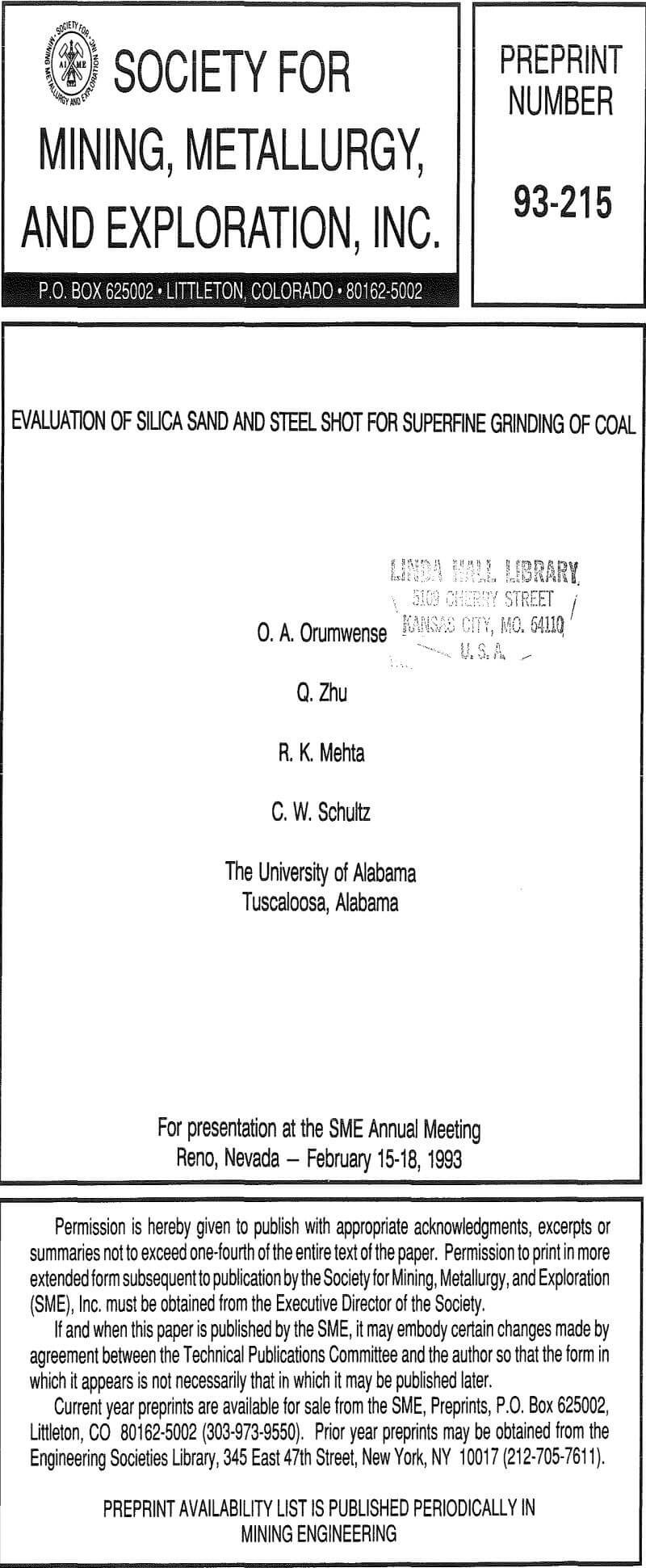The sample was dried at a low temperature for two days. Then it was crushed in stages using a jaw crusher and simultaneously screened with a 50 mesh sieve. The resulting coarse fraction was further ground in a roller mill to a minus 50 mesh size. Thereafter, the mono-dispersed feed sizes required were prepared from the minus 50 mesh material. The grinding tests were carried out using a modified Denver flotation machine equipped with a grinding chamber and rotor configuration shown in Figure 1.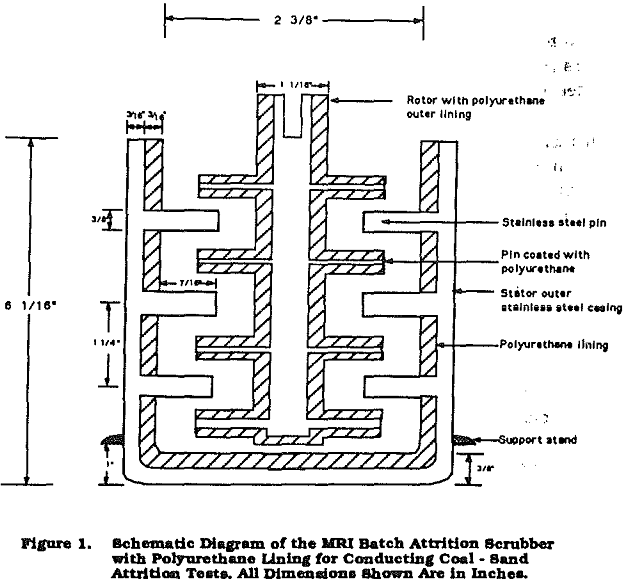
The chamber has a net volume of 230 ml and about 60 % of the volume was filled with both grinding media and slurry during each test in order to minimize spillage. Silica sand and steel shots of about 1 mm size were used as grinding media. The volumetric filling was kept constant for the two media types. Batch grinding method was employed. Once the rotor was set in place, the required amount of grinding media was Introduced followed by coal and water prior to the commencement of grinding. The time duration used for each test was fixed at 12 minutes. The grinding media were separated by screening at the end of each test. Hie particle size distribution of the products were analysed using Cilas granulometre 715.
When the predicted yield at the centers (stationary points) of the fitted functions (equations 9, 11, 13, and 15) are compared with the corresponding experimental results in Table 2, it is observed that they lie within the respective experiment regions. Hence, the fitted models represent the data and the co-ordinates of the stationary points should give estimates of the optimal operating conditions. The optimum conditions for the silica sand system are 2460 rpm, 21 % solids, 170 mesh for the median size and 2021 rpm, 55 % solids, 100 mesh in the case of specific energy. While for the steel shot system, the corresponding values are 1422 rpm, 41 % solids, 150 mesh for the median size and 1958 rpm, 44 % solids, 170 mesh for the specific energy. However, since no further confirmatory experiments were made, the above estimates for the optimal conditions should be considered as approximate values.
A selected number of the products were subjected to proximate and ash chemical analyses and the forms of sulphur present were also evaluated. The results of these are shown in Table 8. It can be seen that the volatile matter contents, fixed carbon, and the calorific values of the products from the two systems are comparable. On the other hand, the ash, chromium and iron contents in the steel shot products are higher than those obtained in the silica sand products. This difference in the ash amount and composition of the products of the two systems arises due to the wear of the steel media.
Silica sand is a viable alternative for steel shot in fine grinding of coal. In addition to the low costs of silica sand, there are also the benefits of low specific energy consumption and wear associated with the use of silica sand. However, the unit capacity of a mill may be reduced slightly when silica sand is used as a substitute for steel media.
